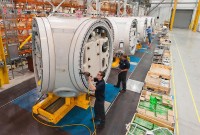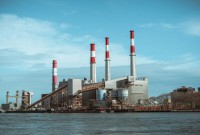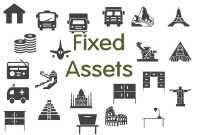- Home
- Business Processes
- Industry Knowledge
- Aerospace Industry
- Automotive Industry
- Banking Domain
- BFSI Industry
- Consumer/ FMCG Industry
- Chemicals Industry
- Engineering & Construction
- Energy Industry
- Education Domain
- Finance Domain
- Hospitality Domain
- Healthcare Industry
- Insurance Domain
- Retail Industry
- Travel and Tourism Domain
- Telecom Industry
- Leadership Skills
- eLearning
- Home
- Domain Knowledge
- Fixed Assets
- Key challenges in managing FA process
Key challenges in managing FA process
As organizations grow in scale they need a more detailed justification of capital expenditure. This leads to many functions getting involved in the fixed asset management process with significant “hand-offs” at each step/stage. In this chapter, we will address a broad array of issues involved in the process of fixed assets in any large scale organization.
For large organizations, the simple traditional approaches cannot deliver a robust fixed management process because with scale increased the quantum of expenditure which involves substantial exposure to risk. For most organizations it a strategic and complicated process that involves participation from cross-disciplinary teams (including the requisitioning team, sales, engineering, manufacturing, marketing, information technology department, supply chain, buy to pay team, accounting team and various tax departments, etc.) and carries a high degree of inherent uncertainty.
Given below are some challenges inherent in a typically fixed assets management process:
- Multiple organization structures for fixed assets
- Shared Services in various locations, centralized within the biz, and standalone at sites
- Numerous IT platforms used for fixed asset register ranging from advanced ERPs to local systems including Excel
- Lack of standard data attributes/definitions relevant to capturing fixed assets across organization spanning multiple departments and teams
- Complexities to have multiple representations for the same set of fixed assets for other purposes like STAT, Tax, etc.
- Complexity due to country-specific tax (US & Non-US), statutory, and VAT/GST requirements
- Multiple systems may result in extraction/interface challenges
- Need for expertise and discipline across business units to account for both US GAAP and local GAAP requirements
- Limited central or regional SMEs consultation, Limited communication between tax and stat experts with the FA accounting
- Best practices not leveraged across businesses
- Limited/inconsistent policies, standard operating procedures, process documentation and training
- Asset data is duplicated across several systems
- Data held on one system is not made available to other systems
- Reports are drawn from various sources and are inconsistent
- No systemized verification exercises having taken place since long
Related Links
You May Also Like
-
Physical assets are frequently out in the field for use; undergo repairs, sold, updated, removed or stolen. From purchase to disposal and all of the steps in between, an asset’s history can be easily traced and reviewed using an asset management system that utilizes asset tags or asset labels.
-
Key challenges in managing FA process
As organizations grow in scale they need a more detailed justification of capital expenditure. This leads to many functions getting involved in the fixed asset management process with significant “hand-offs” at each step/stage. In this chapter, we will address a broad array of issues involved in the process of fixed assets in any large scale organization.
-
“Fixed Assets” is a six-step process and starts with initiating and approving the request to acquire the asset and after maintaining and depreciating for useful life ends with the final disposal of the fixed asset. These steps are cyclic in nature and most of them happen in any fixed management lifecycle. Some optional steps may happen only in certain business scenarios or in specific industries.
-
Costs subsequent to acquisition of fixed assets
Costs related to plant assets that are incurred after the asset is placed in use are either added to the fixed asset account (capitalized) or charged against operations (expensed) when incurred. In this article, we will discuss underlying principles for this accounting event.
-
Introduction to Capital Asset Planning
Before you purchase an asset in any organization, you must justify the decision to purchase the asset and get requisite approvals to make investment and release the funds. These series of analysis steps where cost-benefit analysis is performed to justify the decision to purchase a prospective asset is called the process of capital asset planning or simply as capital budgeting.
-
Asset Maintenance – Tagging & Physical Verification
Most organizations need to deal with hundreds or even thousands of physical assets. In such a case, it’s important to know the operating condition and location of the assets owned by them at periodical intervals. Identifying, tracking, and controlling assets are a critical step in ‘Asset Maintenance’.
-
A fixed asset register (FAR) is accounting book with a list of fixed assets belonging to particular entity. Traditionally the fixed asset register was maintained in written form by the accountant using a book that was set aside specifically for tracking fixed assets. Now with the advent of IT systems for bookkeeping it is more often held in electronic format. Learn the importance of maintaining a FAR.
-
Fixed Assets - Key Terminology
In this article, we have explained the meaning and usage of key generic terms that are used in almost every FA management system/ Fixed Assets process. Understanding these terms is a prerequisite to building a solid understanding of the fixed assets business process.
-
An asset is anything that will probably bring future economic benefit. Every company must take actions to safeguard, control, and manage the assets it owns. Cash Assets needs to be managed effectively to safeguard and utilize them efficiently. In this section, we will start with understanding what are assets, what are various classification of assets and then we will focus on Asset Management.
Explore Our Free Training Articles or
Sign Up to Start With Our eLearning Courses

About Us
Learning
© 2023 TechnoFunc, All Rights Reserved









